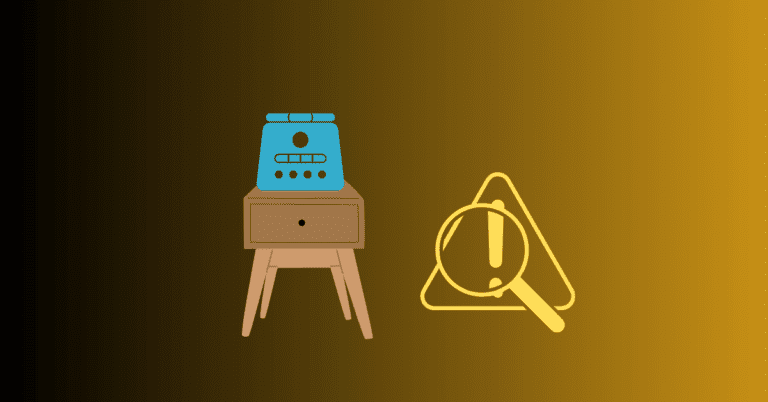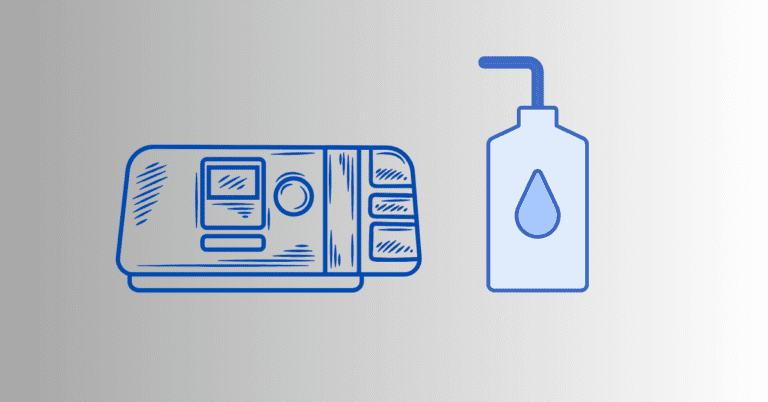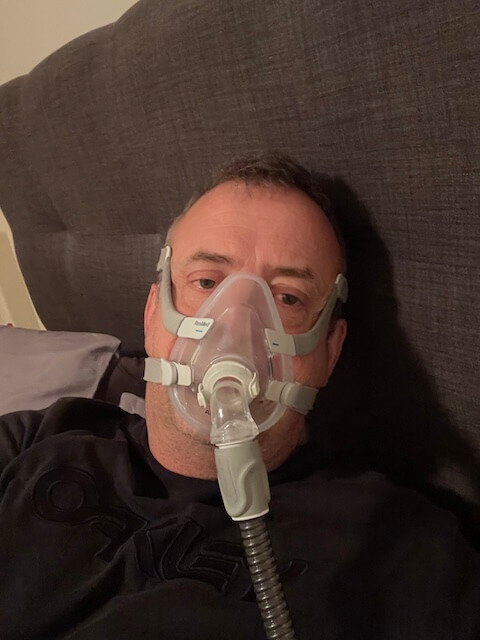How I Stayed Consistent With CPAP (and How You Can Too)
Jeremy Smith is a long-term CPAP user and sleep apnea advocate. After being diagnosed with severe obstructive sleep apnea, he created ByJeremySmith.com to help others navigate CPAP therapy through personal stories, gear reviews, and practical advice.
If you’re new to CPAP therapy—or if you’ve been prescribed a machine and it’s gathering dust then it’s time to get you using it.

I’ve been there. I was diagnosed with severe sleep apnea and began using a CPAP machine, which has helped tremendously and turned my life around.
But I’ll be honest: It wasn’t easy initially. I struggled. The mask felt awkward, and the noise was annoying. I wanted to rip it off every night.
Still, I stuck with it—and I’m so glad I did.
In this article, I’ll share how I stayed consistent with CPAP therapy, my challenges, and the little tricks that made a big difference. If you’re struggling with consistency, this guide is for you.
Why Consistency with CPAP Matters
Let’s start here: CPAP only works if you use it—every single night.
Sleep apnea isn’t something that takes a day off. If you skip therapy, your airway is still collapsing. You’re still waking up without realizing it. Your oxygen is dipping. Your body is stressed. And those long-term risks—heart problems, brain fog, high blood pressure—they’re still there.
When I started seeing CPAP as a nightly prescription, not an optional comfort, everything changed.
The First Few Weeks Were the Hardest
I remember the first night vividly. I strapped on my full-face mask and thought, “How am I supposed to sleep with this thing blowing air into me?”
I lasted 45 minutes.
That first week? Brutal. I ripped it off around 2 AM every night. The mask left marks on my face. I felt claustrophobic. But I kept trying—and I started making small changes.
If you’re starting out and you hate it, don’t quit. That discomfort is temporary. Your body just needs time to adjust.
1. Finding the Right Mask Changed Everything
The biggest breakthrough can often be finding the right mask.
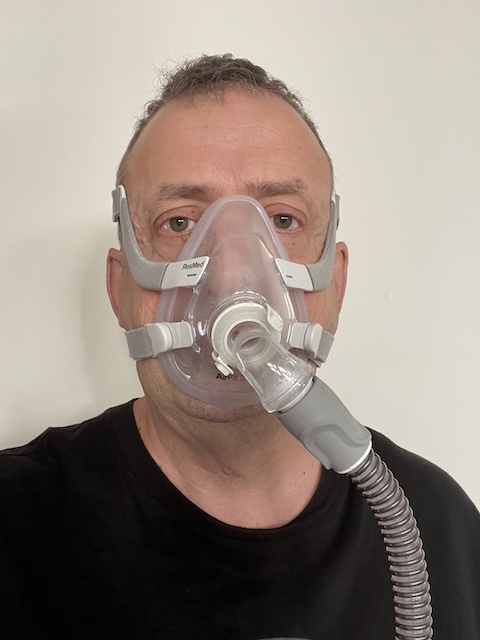
For me, even though I might resemble Darth Vader. I knew the full mask I needed: the ResMed AirFit F20.
You might have to experiment to get the mask that works for you.
👉 Tip: Try different mask styles. Nasal pillows, nasal masks, and full-face masks all offer unique comfort levels. Most CPAP suppliers offer mask swap programs.
2. Creating a Nighttime CPAP Ritual
Sticking with CPAP got more manageable once I built it into a nighttime routine. Here’s what mine looked like:
- 9:30 PM: No more screens, start winding down
- 10:00 PM: Brush teeth, wash face
- 10:15 PM: Turn on white noise machine
- 10:20 PM: Fill humidifier, put on mask
- 10:30 PM: Lights out
Doing the same steps every night helped me mentally prepare for sleep—and made using CPAP feel automatic, not like a chore.
3. Humidifier = No More Dry Nose and Throat
I didn’t use the humidifier for the first month. Big mistake.
I woke up with a dry mouth, scratchy throat, and occasional nosebleeds. Once I started using the heated humidifier, those symptoms vanished.
👉 Pro tip: Use distilled water to avoid mineral buildup. And clean the chamber weekly!
4. Cleaning Routine That Didn’t Feel Like a Hassle
Let’s be honest—nobody wants to scrub their gear every day.

But you should certainly wash your mask every day, and clean out and dry your tray.
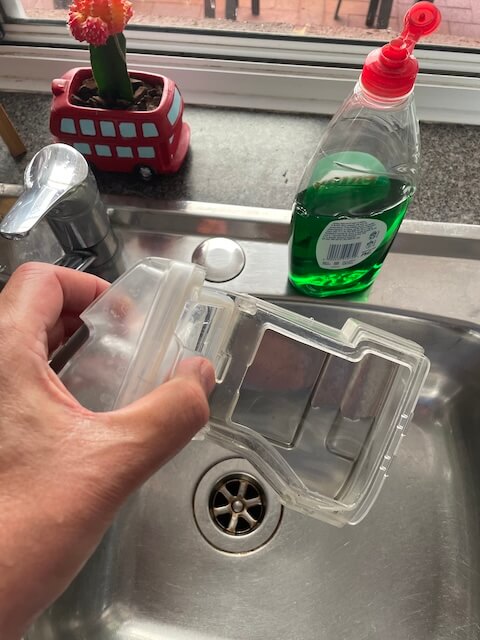
- Daily: Clean mask cushion with water or CPAP-friendly wipes (takes 10 seconds)

- Weekly: Soak mask, hose, and humidifier in warm soapy water
Then Monthly: Inspect filters and replace them if needed
I’m thinking of buying the Liviliti Paptizer (UV sanitizer) to make cleaning less of a burden. If I do, I will drop a review.
5. Using a CPAP App for Motivation
Tracking progress was a huge motivator. I used the myAir app from ResMed to see my nightly stats—usage hours, mask seal, and events per hour. Watching those scores go up felt good. It gave me a sense of accomplishment.
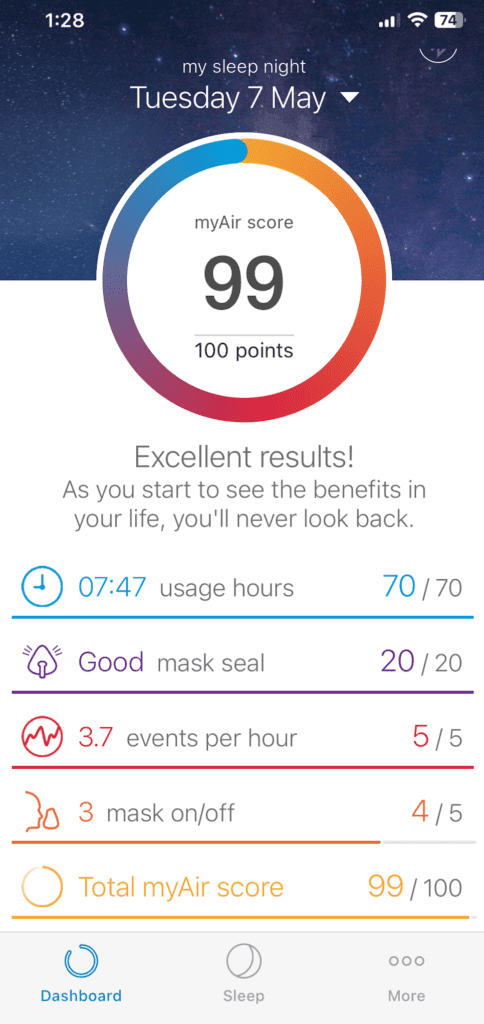
If you’re data-driven like me, this can be a game changer.
6. Setting Small, Achievable Goals
When I started, I told myself: Just make it to 4 hours tonight.
Then 5 hours.
Then a full night.
Within a couple weeks, I was sleeping 7–8 hours with the machine and feeling so much better in the mornings.
Set goals that feel doable. Celebrate wins. Build momentum.
7. Talking to My Sleep Specialist Regularly
Don’t suffer in silence. I checked in with my sleep doctor every few months.
We tweaked pressure settings, swapped masks, and addressed problems as they came up. I also learned about auto-adjusting CPAP (APAP) machines—these adapt to your breathing in real-time. That made therapy feel smoother and more natural.
If your CPAP still feels “off,” get support. You don’t have to figure it out alone.
8. Making CPAP Travel-Friendly
Travel used to derail my consistency. I’d leave the machine home and just “tough it out.”
Bad idea.
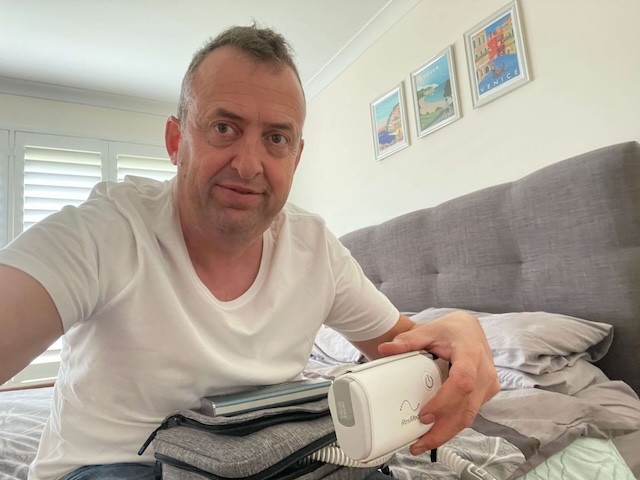
Now, I use the ResMed AirMini, a travel-sized CPAP that fits in my backpack. It’s FAA-approved and works with hotel outlets and battery packs. It’s a game changer for vacations and business trips.
Staying consistent even when away from home is key to long-term success.
9. Remembering Why I Started
I reminded myself of the alternative on nights when I didn’t feel like it.
Before CPAP, I used to wake up exhausted. I’d get migraines. I’d fall asleep at my desk. My blood pressure was rising. Honestly, it was scary.
CPAP therapy restored my energy. My mornings are clearer, I don’t nap constantly, and my partner no longer wakes up from my snoring.
Every night, I wear the mask- a step toward better health—and that’s worth it.
10. Joining a Community (Online or Offline)
I found a Facebook group for CPAP users, which helped a ton.
Seeing others share their frustrations—and wins—kept me going. I learned hacks I never would’ve thought of, like using a CPAP hose cover to reduce rainout.
If you’re feeling isolated, join a community. You’ll find people just like you who get it.
Final Thoughts: You’ve Got This
If you’re struggling with CPAP consistency, give yourself grace. It takes time. But every night you use it, you give your body the sleep it needs to heal and thrive.
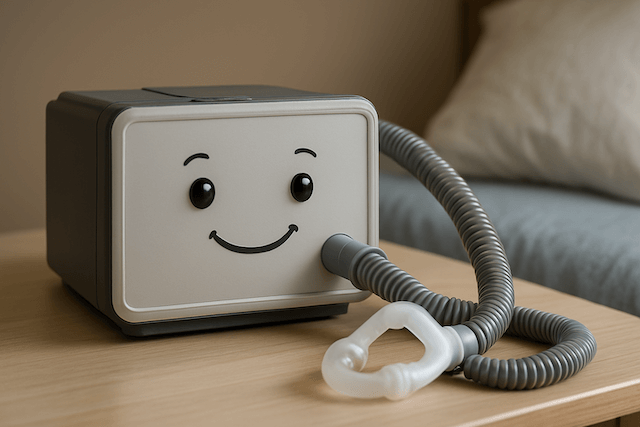
Start small. Tweak what’s not working. Don’t be afraid to ask for help.
It took me about a month to get fully adjusted. Now? I can’t sleep without it. I even wake up if I forget to turn it on—my body wants that support now.
You’ve got this. If you ever need help choosing the right mask, machine, or accessories, check out my guides on byjeremysmith.com. I’ve tested a lot, so you don’t have to.
Disclaimer: The content on this blog is for informational and educational purposes only and is not a substitute for professional medical advice. Always speak with your doctor or sleep specialist before starting, stopping, or changing any treatment or therapy related to sleep apnea or CPAP use.



